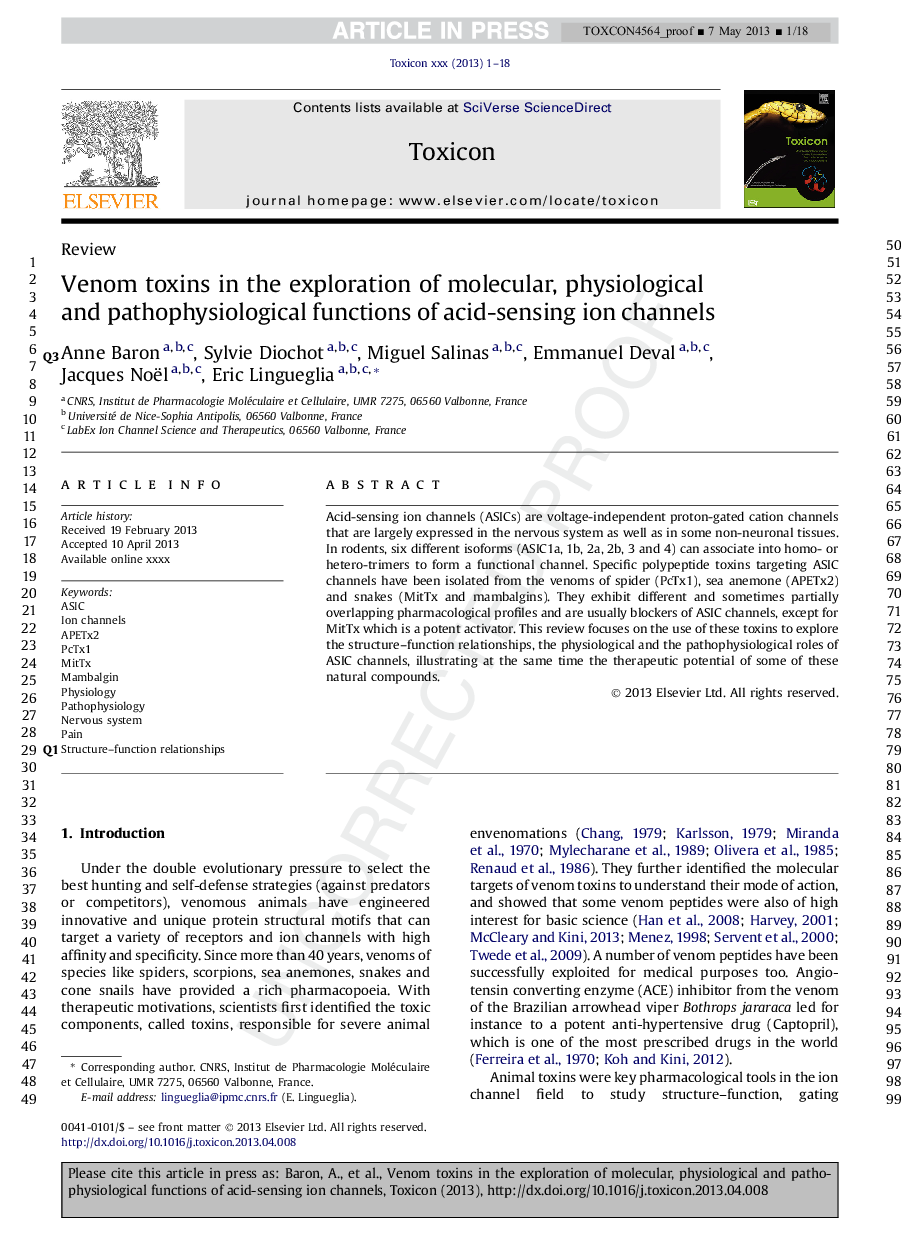| Article ID | Journal | Published Year | Pages | File Type |
|---|---|---|---|---|
| 8397032 | Toxicon | 2013 | 18 Pages |
Abstract
Acid-sensing ion channels (ASICs) are voltage-independent proton-gated cation channels that are largely expressed in the nervous system as well as in some non-neuronal tissues. In rodents, six different isoforms (ASIC1a, 1b, 2a, 2b, 3 and 4) can associate into homo- or hetero-trimers to form a functional channel. Specific polypeptide toxins targeting ASIC channels have been isolated from the venoms of spider (PcTx1), sea anemone (APETx2) and snakes (MitTx and mambalgins). They exhibit different and sometimes partially overlapping pharmacological profiles and are usually blockers of ASIC channels, except for MitTx, which is a potent activator. This review focuses on the use of these toxins to explore the structure-function relationships, the physiological and the pathophysiological roles of ASIC channels, illustrating at the same time the therapeutic potential of some of these natural compounds.
Related Topics
Life Sciences
Biochemistry, Genetics and Molecular Biology
Biochemistry, Genetics and Molecular Biology (General)
Authors
Anne Baron, Sylvie Diochot, Miguel Salinas, Emmanuel Deval, Jacques Noël, Eric Lingueglia,
